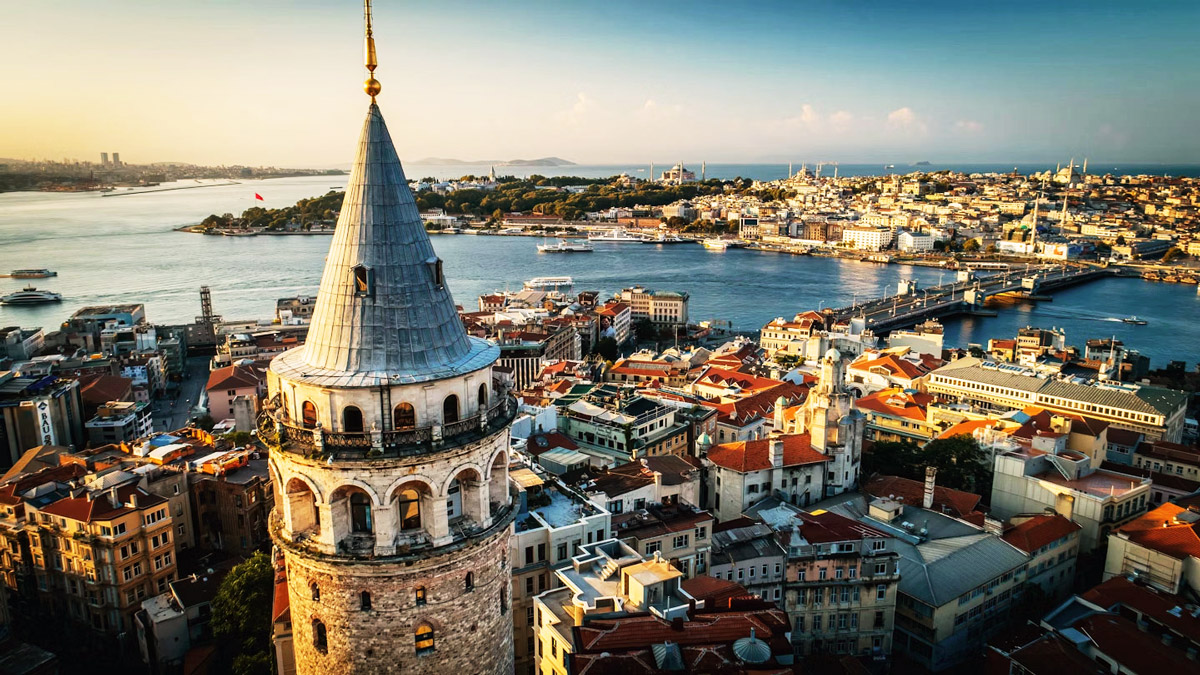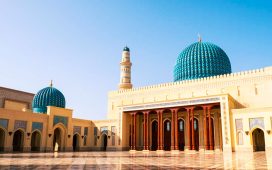Few cities in the world straddle two continents, and none does it with the flair of Istanbul. A vibrant blend of East and West, this city pulses with history, culture, and modern sophistication. From awe-inspiring landmarks to lively bazaars and chic waterfront lounges, Istanbul invites travelers to immerse themselves in its unique rhythm.

History of Istanbul
Few cities rival Istanbul for historical grandeur. Founded as Byzantium in the 7th century BCE, it became Constantinople under Emperor Constantine in 330 CE, serving as the capital of the Byzantine Empire. With the Ottoman conquest in 1453, it transformed again, becoming the seat of the sultans and a center of Islamic culture. Across centuries, Istanbul bridged East and West, blending Christian mosaics with Islamic domes, and welcoming merchants from across the world. In 1930, the city officially became Istanbul, continuing its role as Turkey’s cultural and economic heart. Today, its skyline of minarets and domes reflects a history as layered and complex as the Bosphorus itself.
A Living Tapestry of History
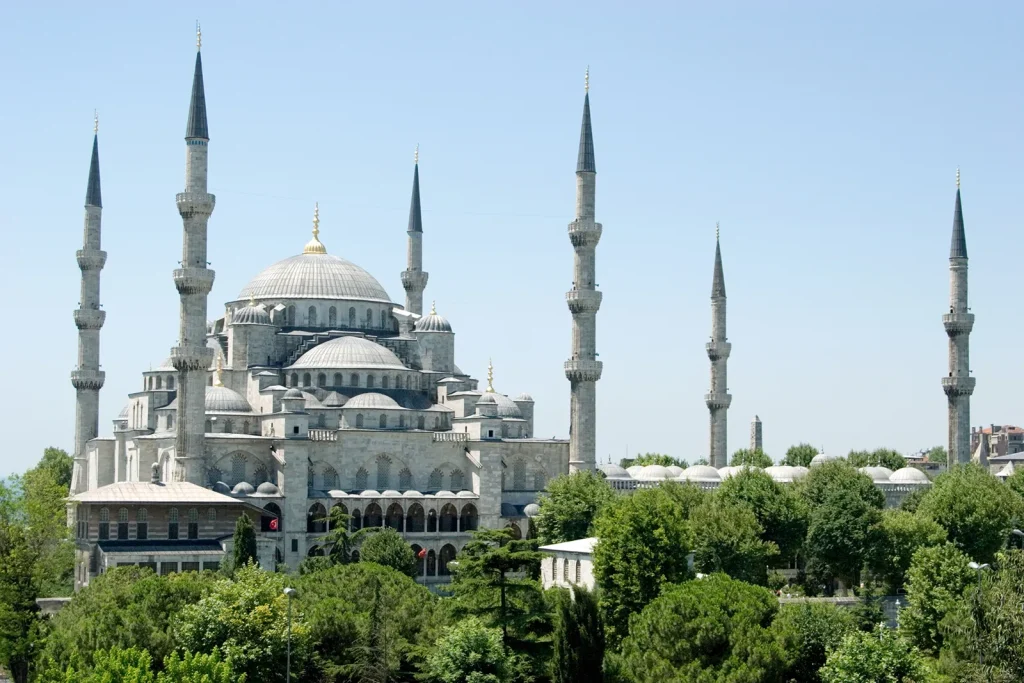
Walking through Istanbul feels like turning the pages of a history book written in stone. The Hagia Sophia, with its soaring dome and glittering Byzantine mosaics, has served as a church, mosque, and now a museum—an enduring symbol of Istanbul’s layered identity. Just across the square, the Blue Mosque (Sultan Ahmed Mosque) enchants with its cascade of domes and more than 20,000 hand-painted Iznik tiles. Nearby, the Süleymaniye Mosque, designed by the famed architect Mimar Sinan, crowns one of Istanbul’s seven hills and offers a quieter, equally majestic experience.
Beneath the bustling streets lies the Basilica Cistern, a vast underground water reservoir built in the 6th century. Rows of marble columns rise from the water, including the mysterious Medusa heads that hold two bases in place. This cool, dimly lit cavern once supplied water to the Great Palace of Constantinople and still carries an otherworldly atmosphere.
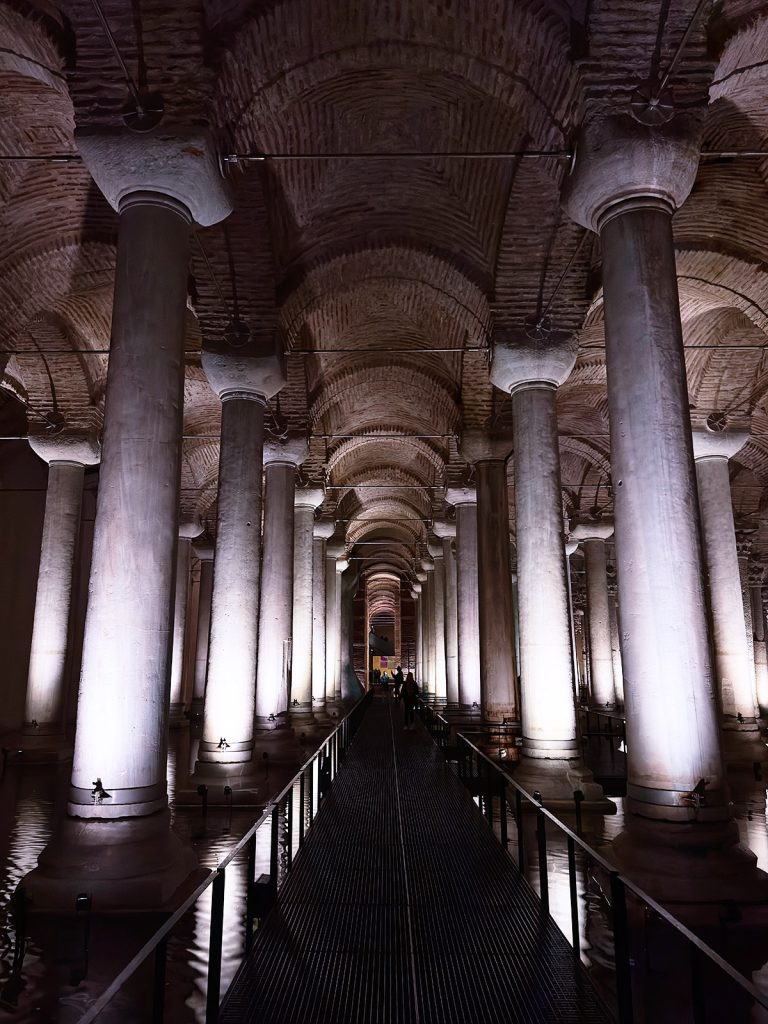
History also seeps into daily life through the remains of Roman baths scattered across the city, such as the Baths of Zeuxippus near the Hippodrome, which speak to the Roman love of social bathing culture. Some have been adapted into modern Turkish baths (hamams), where visitors can still indulge in centuries-old cleansing rituals.
Glamour Along the Bosphorus

For a taste of modern Istanbul, the Bosphorus shoreline is where glamour thrives. Trendy rooftop lounges in Karaköy and Bebek offer panoramic views as ferries glide past. By day, stroll the waterfront promenades; by night, sip cocktails as the city lights shimmer on the strait dividing Europe and Asia.
The Bosphorus Cruise: A Must-Do
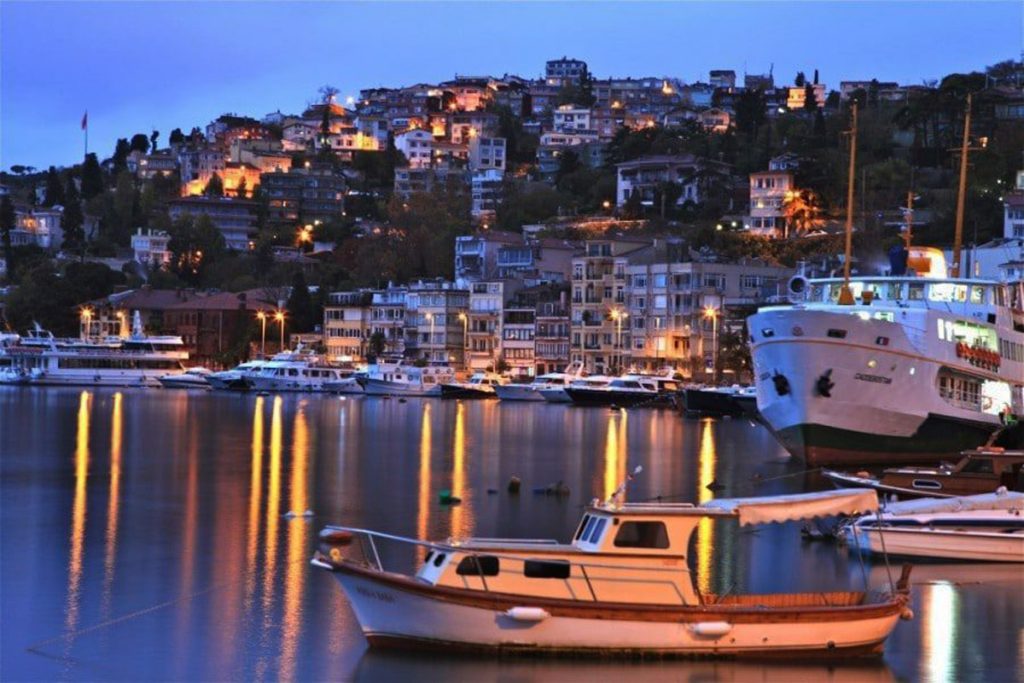
A Bosphorus River tour is one of the most unforgettable experiences in Istanbul. Cruising between Europe and Asia, you’ll drift past Ottoman palaces, medieval fortresses, waterfront mansions, and lively fishing villages. Whether you choose a short public ferry ride, a private yacht charter, or a sunset dinner cruise, the blend of history and natural beauty makes this journey essential for every visitor.
Culinary Journeys
Turkish cuisine is a feast for the senses. Wander through the Spice Bazaar, where saffron, sumac, and rose petals perfume the air. Try succulent kebabs in Kadıköy, savor mezes at traditional meyhanes, and don’t miss the world-famous baklavawith pistachios from Gaziantep. For an upscale dining experience, Mikla and Sunset Grill & Bar deliver modern takes on Turkish flavors with sweeping city views. Street food lovers will rejoice at simit (sesame bread rings), roasted chestnuts, and fish sandwiches by the Galata Bridge.
Turkish Breakfast Culture

Breakfast in Turkey is a ritual, often lasting hours and built around endless tea, fresh bread, cheeses, olives, honey, eggs, and more. Some of the best places to enjoy a traditional Turkish breakfast include:

- Bazlama Kahvaltı (Nişantaşı): Famous for its warm, fluffy bazlama bread, homemade jams, and generous spreads.
- Van Kahvaltı Evi (Cihangir): Inspired by the eastern city of Van, this spot serves one of the most complete breakfast spreads in Istanbul.
- Namlı Gurme (Karaköy): A deli-style restaurant where you can build your own customized feast of cheeses, olives, and cured meats.
- Emirgan Sütiş (Emirgan): A Bosphorus-side classic, perfect for enjoying breakfast with a view.
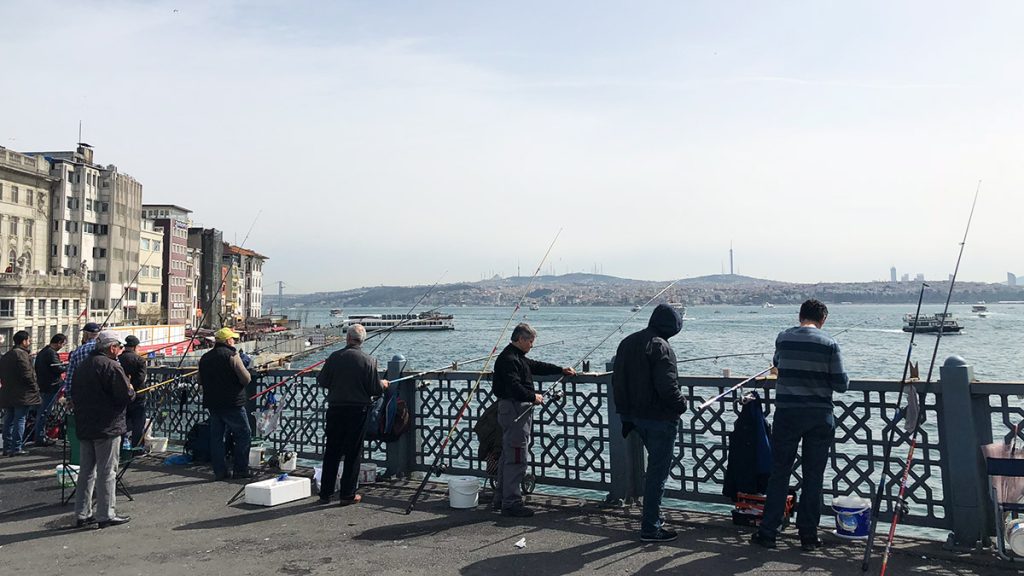
Neighborhoods of Contrast
Istanbul’s magic lies in its neighborhoods, each with a personality of its own.
- Sultanahmet: The historic heart, home to the Hagia Sophia, Blue Mosque, and Topkapi Palace.
- Beyoğlu & Galata: A lively mix of bohemian charm and nightlife, crowned by the iconic Galata Tower.
- Karaköy: Once a gritty port district, now a hub of trendy cafés, boutique hotels, and art spaces.
- Balat & Fener: Historic quarters with colorful wooden houses and religious diversity.
- Kadıköy (Asian Side): Youthful, bustling, and full of street art and nightlife.
- Üsküdar: Serene waterfront mosques and tea gardens.
- Nişantaşı: The city’s fashion hub, lined with designer boutiques, European-style boulevards, and chic cafés.
Hidden Corners & Local Charms
Beyond the main attractions, Istanbul reveals quieter gems. The Princes’ Islands, a ferry ride away, offer car-free tranquility with Victorian-era mansions and pine-scented bike paths. In Çukurcuma, antique shops spill onto narrow streets, where Ottoman relics mingle with retro finds. For a break from the crowds, explore the city’s courtyards and tea houses, where time slows down over a steaming glass of çay.
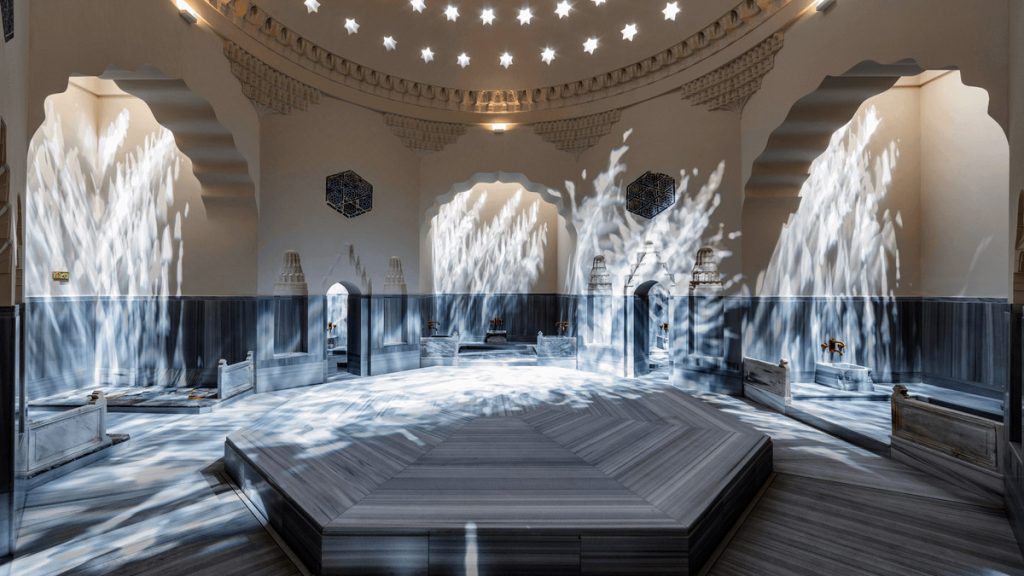
Hammams: Rituals of Steam and Stone
No trip to Istanbul is complete without stepping into a hammam, where marble, steam, and ritual cleansing merge into a centuries-old tradition. Each bathhouse offers not only relaxation but also a glimpse into Ottoman social life and architectural beauty.
- Çemberlitaş Hamamı (1584)
Commissioned by Nurbanu Sultan, the wife of Selim II, and designed by the legendary architect Sinan, this hammam sits in the heart of Istanbul near the Grand Bazaar. Its soaring dome, intricate stonework, and spacious marble platform have welcomed travelers for over four centuries. Today, it remains one of the most popular hammams for both locals and visitors. - Cağaloğlu Hamamı (1741)
Built during the reign of Mahmud I, this baroque-inspired hammam is one of the last great bathhouses constructed during the Ottoman era. Its grand steam halls and ornate vaulted ceilings have hosted everyone from Ottoman dignitaries to famous artists and writers. Recognized by UNESCO, it is often listed as one of the world’s most beautiful hammams. - Kılıç Ali Paşa Hamamı (1580s)
Another masterpiece by Mimar Sinan, this hammam was built for the Ottoman admiral Kılıç Ali Paşa. After a meticulous seven-year restoration, it has regained its grandeur with a luminous dome, serene marble interiors, and a tranquil atmosphere. Nestled in Karaköy, it blends history with modern spa-level service. - Süleymaniye Hamamı (1557)
Attached to the grand Süleymaniye Mosque complex, this bathhouse was designed by Sinan for Sultan Süleyman the Magnificent himself. Historically used by sultans and their court, it offers a unique couples’ experience where men and women bathe together — a rarity among traditional hammams. The sense of history is palpable in every stone. - Historical Galatasaray Hamamı (1832)
Founded during the reign of Sultan Mahmud II, this hammam sits in the lively district of Beyoğlu. Its 19th-century marble interiors and domed ceilings preserve the authentic Ottoman bath experience. Still active today, it remains one of the most atmospheric spots for a traditional scrub and massage in the city.
Together, these hammams offer a sensory journey into Istanbul’s past — from 16th-century sultans to 19th-century socialites — all while delivering the soothing warmth of timeless ritual.
Day Trip Ferries

Istanbul’s ferries aren’t just transport—they’re adventures in themselves. Hop aboard and you’ll discover whole new sides of the city:
- Üsküdar & Kadıköy: Quick trips across the Bosphorus bring you to vibrant Asian-side neighborhoods full of markets, bookshops, and local cafés.
- Princes’ Islands: A day trip to Büyükada or Heybeliada offers pine forests, bike rides, and Ottoman-era mansions in a car-free setting.
- Anadolu Kavağı: A northern village stop on longer Bosphorus tours, known for its seafood restaurants and castle ruins overlooking the Black Sea.
- Bosphorus Villages: Ortaköy, Arnavutköy, and Bebek can be reached by short ferry rides, each offering its own mix of history, waterside dining, and nightlife.
These ferry journeys show how Istanbul’s identity is tied to its waterways, connecting neighborhoods and lifestyles across two continents.

Shopping with Style
Shopping in Istanbul is a journey through contrasts.
- The Grand Bazaar: One of the world’s oldest covered markets, dazzling with carpets, ceramics, and jewelry.
- Istinye Park Mall: A modern luxury shopping destination blending international designers with Turkish brands, complete with a chic outdoor “village” for boutique strolling.
- Nişantaşı: A sleek district of designer stores and stylish cafés, favored by Istanbul’s fashion-forward crowd.
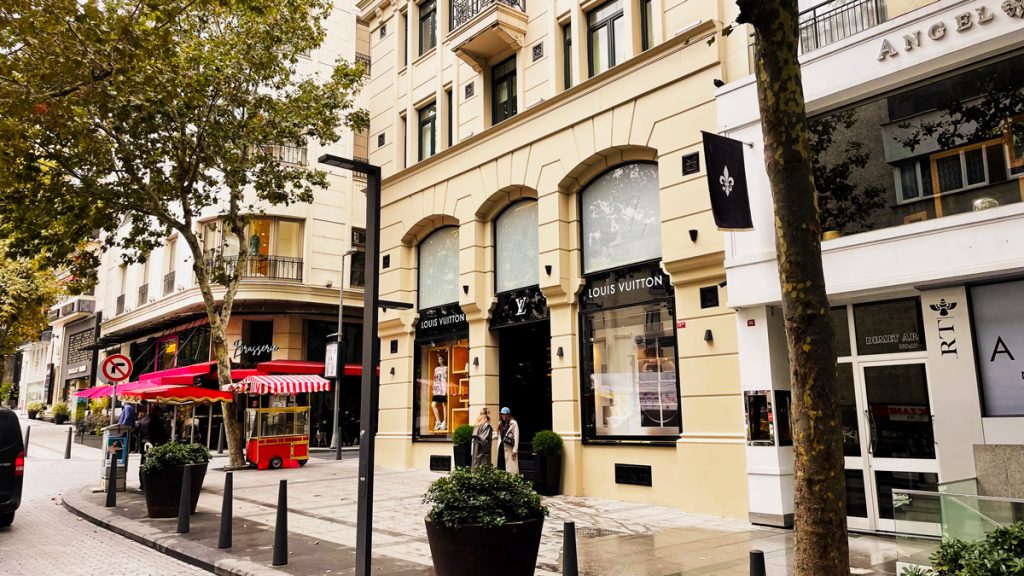
Nightlife & Lounges
As the sun sets, Istanbul transforms into a city that never sleeps. 360 Istanbul, perched high above Istiklal Street, offers cocktails with a view. Sortie and Ulus 29 blend fine dining with vibrant nightlife along the Bosphorus. For something more eclectic, explore hidden jazz clubs in Galata or catch live Turkish music in a traditional tavern.
Practical Tips
- Getting Around: Embrace the ferries—they’re scenic, affordable, and a quintessential Istanbul experience.
- Timing: Spring and autumn are ideal for mild weather and fewer crowds.
- Cultural Etiquette: When visiting mosques, dress modestly and remove shoes at the entrance.
Final Thoughts

Istanbul is not just a city—it’s an experience. From Byzantine mosaics to Ottoman grandeur, from steaming hammams to leisurely Turkish breakfasts, it offers a mosaic of cultures and lifestyles unlike anywhere else. Each neighborhood adds its own note to the city’s symphony, creating a destination where history and modernity live side by side. Whether you’re crossing continents on a ferry or gliding past palaces on a Bosphorus cruise, Istanbul will leave you with memories as layered as its history.

